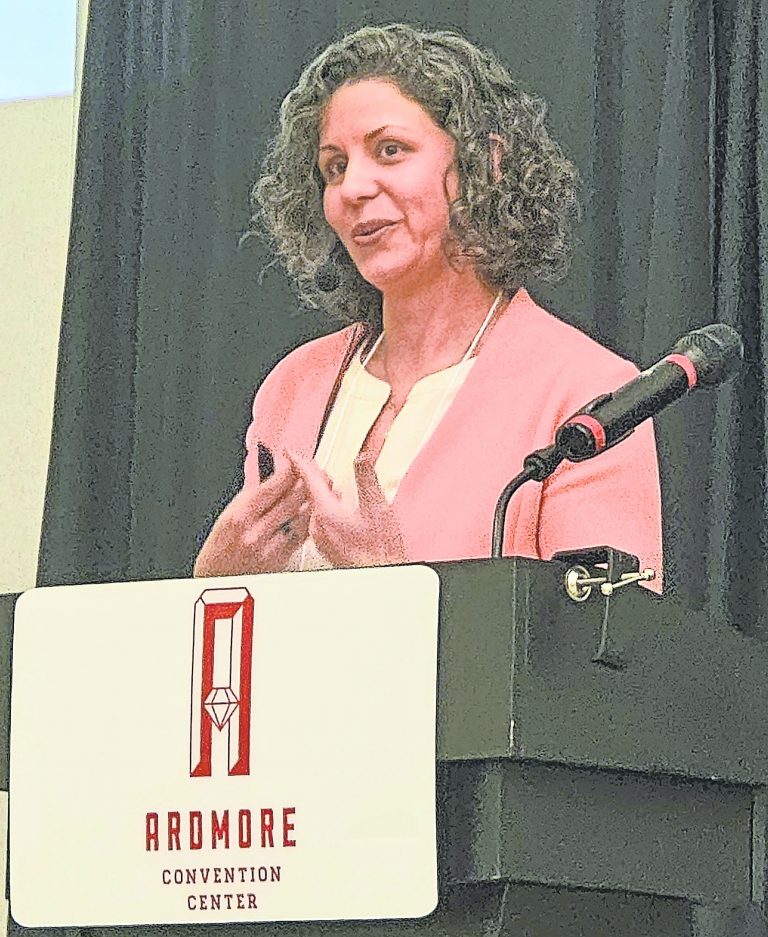Ardmore property owners with older commercial and residential holdings began receiving letters this weekend in regard to the possibility of their water service line being manufactured with lead.
The letter is part of the Environmental Protection Agency’s revised lead and copper rules, which dictate the city replace any of its pipes that were made with lead. Public Works Director Shawn Geurin said Ardmore has never experienced elevated lead levels that exceed the EPA’s lead action level. The notification and planned replacement of lead pipes is part of a national program. The Department of Environmental Quality is administering the program.
Pipes to be replaced.
Geurin said within the water line system, the city owns the service line that goes from the main line to the meter. Lines from the meter to the home belong to the property owner. The water crisis in Flint, Michigan helped spur the program and the EPA has set a goal of removing all lead lines from the system, from the main to the meter. That will also include galvanized lines, with lead being the biggest issue.
“At one time, they put in lead lines,” he said. “The city could have potentially put in a lead line from the main to the meter.”
The big issue will be to identify which properties have the lead lines. Geurin said a ban on lead lines was approved in 1986 and went into effect in 1987. The city has developed an initial inventory of its service lines from the main to the meter. There are currently 11,837 meters, or accounts, on the list.
Guerin said every structure was researched and dated. It was assumed that all houses built after 1986 did not have lead pipes due to the ban. If it was dated before 1986, it was assumed it could potentially have a lead line.
“When we looked at this, our records go back to the 1920’s or even further back, we found some homes older than that, our records were not accurate enough to determine that (lead pipes),” he said.
Geurin did note there are homes that have had line work since 1986 during which the pipe could have been replaced. Research that he has conducted has also indicated after the 1950’s, it was not a real common practice to use lead pipe although it could have taken place. The records are simply not good enough to be relied on.
Getting to the root of the problem
Those who fall under the unknown category in terms of lead piping will receive a letter from the city this weekend, appraising them of the situation. There are a total of 8,644 letters going out.
The next step will be for the city to look at the pipe to determine the material. If it needs to be replaced, the city, and other communities across the nation, will be tasked with replacing the pipeline over the span of 10 years, or 10% each year.
Meanwhile, there is not an existing health threat. Geurin said the city samples 30 sites in the system that are more vulnerable to potential contamination. The city has not exceeded the lead action level of 15 parts per billion at any of its sites.
“That has not happened,” he said. “We would have had to put out public notice. What is happening is proactive. We are moving in the direction of replacing all the potential lead lines.”
Ardmore’s water also provides protection. Guerin said it is a hard water with the PH closer to a neutral PH with alkalinity and minerals in the water, which encapsulates the pipes.
“You see it in your house, you see it in your toilet and your sink,” he said. “You see that white hard crust, everyone calls it hard water, that is encapsulating all that pipe so the lead is not exposed for those places that may have lead.”
The physical inventory of pipes for both residential and commercial properties will be conducted with the state taking part in developing the schedule.
For additional information, residents can call 580-221-5445.



